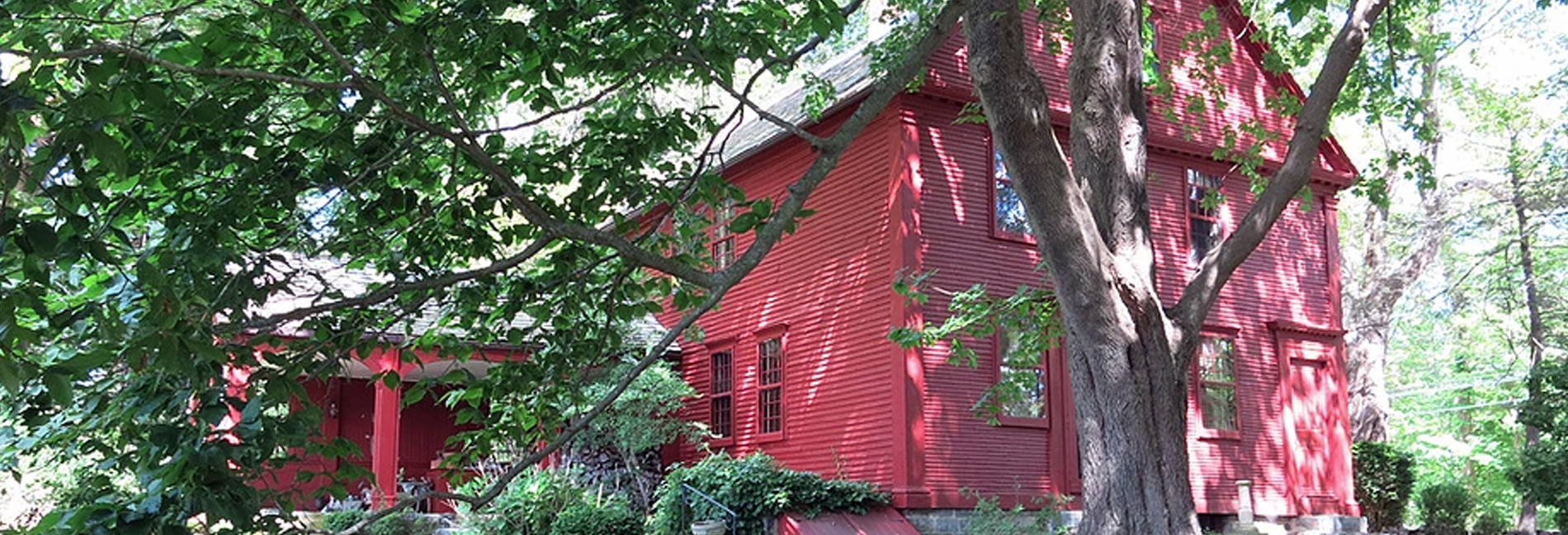Palmer-Warner House
307 Town Street, East Haddam, CT 06423
palmer.warner@ctlandmarks.org
Summer Weather Advisory
Our historic property is not climate controlled. Staff may adjust the route, duration, and schedule of tours due to higher temperatures or extreme weather. Please contact us before your visit to confirm operations. Learn more »
Palmer-Warner House
307 Town Street, East Haddam, CT 06423
Palmer.warner@ctlandmarks.org
The Palmer-Warner House is open for tours on Saturdays, June 1-22 from 12 noon–4 pm in celebration of Pride Month! Specialty tours of the home will introduce visitors to its residents and explore the themes of Equity, Unity, and Reflection. A Historic Timeline of Connecticut’s LGBTQ Community on loan from the Connecticut Museum of Culture and History will be on view in the barn. Join us on Saturday, June 29, for our culminating celebration in partnership with the East Haddam Historical Society. See all upcoming Pride Month events here »
Summer Weather Advisory
Our historic property is not climate controlled. Staff may adjust the route, duration, and schedule of tours due to higher temperatures or extreme weather. Please contact us before your visit to confirm operations. Learn more »
Admission
$20/Person
$15/Connecticut Landmarks Member or East Haddam resident
House Tour
Open for special behind-the-scenes tours. Experience the collection of letters and diaries, photographs, historic furnishings, and decorative arts used to reconstruct the lives of Frederic Palmer and Howard Metzger. When weather permits, explore the grounds to see the constructed landscape Metzger and Palmer created.
LEARN MORE
The Palmer-Warner House was built by John and Mehitable (Chapman Richardson) Warner in 1738. The couple used the land–1,000 acres inherited by Mehitable—to farm and to grow their family. In later generations, the Warners became blacksmiths of local acclaim, and many of their pieces were collected by Frederic Palmer and now adorn the house.
In 1936, Frederic Palmer purchased the house and the 50 acres it currently sits on with his mother, Mary Brennan Palmer. An early preservation architect and colonial revival specialist, he set about to restore the house and create a landscape that evoked the 18th century. As a leading member of what has become Connecticut Landmarks, Palmer assisted in the acquisition, renovation, and preservation of numerous CTL properties. He also played a major role in the renovation of the Goodspeed Opera House in the 1960s and the preservation work done at the First Congregational Church in East Haddam.
Frederic Palmer turned the Palmer-Warner House, which he lovingly called Dunstaffnage, into a safe space for his LGBTQ friends, neighbors, and family to gather and live unhindered by societal norms for even just a weekend. Palmer lived in the house with his partner Howard Metzger from the mid-1940s until his death in 1971. Metzger remained in the house until his death in 2005.
CTL is currently cataloging the property’s extensive collections and researching its history in preparation to scale up operations as a museum. The story of Frederic Palmer and Howard Metzger is supported by a wealth of documentary evidence. CTL is fortunate to have diaries, letters, and photo albums that detail their daily lives. We have also recently undertaken an oral history project with East Haddam community members and family of Palmer and Metzger, and are conducting research to be able to contextualize these men’s lives within the wider arc of the 20th century. We seek to be a setting to share multiple viewpoints, and foster conversations around inclusion, individuality, privacy, and privilege.
LEARN MORE
The Palmer-Warner House was built by John and Mehitable (Chapman Richardson) Warner in 1738. The couple used the land–1,000 acres inherited by Mehitable—to farm and to grow their family. In later generations, the Warners became blacksmiths of local acclaim, and many of their pieces were collected by Frederic Palmer and now adorn the house.
In 1936, Frederic Palmer purchased the house and the 50 acres it currently sits on with his mother, Mary Brennan Palmer. An early preservation architect and colonial revival specialist, he set about to restore the house and create a landscape that evoked the 18th century. As a leading member of what has become Connecticut Landmarks, Palmer assisted in the acquisition, renovation, and preservation of numerous CTL properties. He also played a major role in the renovation of the Goodspeed Opera House in the 1960s and the preservation work done at the First Congregational Church in East Haddam.
Frederic Palmer turned the Palmer-Warner House, which he lovingly called Dunstaffnage, into a safe space for his LGBTQ friends, neighbors, and family to gather and live unhindered by societal norms for even just a weekend. Palmer lived in the house with his partner Howard Metzger from the mid-1940s until his death in 1971. Metzger remained in the house until his death in 2005.
CTL is currently cataloging the property’s extensive collections and researching its history in preparation to scale up operations as a museum. The story of Frederic Palmer and Howard Metzger is supported by a wealth of documentary evidence. CTL is fortunate to have diaries, letters, and photo albums that detail their daily lives. We have also recently undertaken an oral history project with East Haddam community members and family of Palmer and Metzger, and are conducting research to be able to contextualize these men’s lives within the wider arc of the 20th century. We seek to be a setting to share multiple viewpoints, and foster conversations around inclusion, individuality, privacy, and privilege.


